Stellantis CEO Thinks EVs Are Too Troublesome

Stellantis CEO Carlos Tavares has said that the growing pressures being placed on automakers to shift toward electric-vehicle production are unsustainable and run the risk of the public getting subpar products at decidedly higher price tags. While we’ve seen automotive executives lambast new energy vehicles before, it’s grown rarer as governments around the world have continued incentivizing their existence and investors have been pouring money on startups delivering literally nothing more than the mere suggestion of more electrification.
Tavares’s words come from the Reuters Next conference, running counter to the event’s prevailing narrative of encouraging technological progress and social change. Attendees tend to be political officials, heads of finance, NGO leaders, and business executives sympathetic to the cause. But the Stellantis CEO definitely went off-script when he listed some of the shortcomings of electrification, adding that he felt the costs were “beyond the limits” of what was realistically feasible. It’s his belief that pursuing electrification at the current pace doesn’t take into account the larger financial picture.
“What has been decided is to impose on the automotive industry electrification that brings 50 [percent] additional costs against a conventional vehicle,” he told Reuters in an interview. “There is no way we can transfer 50 [percent] of additional costs to the final consumer because most parts of the middle class will not be able to pay.”
From Reuters:
Automakers could charge higher prices and sell fewer cars, or accept lower profit margins, Tavares said. Those paths both lead to cutbacks. Union leaders in Europe and North America have warned tens of thousands of jobs could be lost.
Automakers need time for testing and ensuring that new technology will work, Tavares said. Pushing to speed that process up “is just going to be counter productive. It will lead to quality problems. It will lead to all sorts of problems,” he said.
Tavares said Stellantis is aiming to avoid cuts by boosting productivity at a pace far faster than industry norm.
“Over the next five years we have to digest 10 [percent] productivity a year … in an industry which is used to delivering 2 to 3 [percent] productivity” improvement, he said.
“The future will tell us who is going to be able to digest this, and who will fail,” Tavares said. “We are putting the industry on the limits.”
While we’ve absolutely seen EV prices falling over the last few years, it hasn’t been at the pace originally assumed by industry leaders and analysts. A couple of years ago, the media consensus was that electric vehicles would reach financial parity with internal combustion cars by 2025. That date now looks to be edging closer to 2030, surrounded by new promises regarding solid-state batteries and novel ways of sourcing the necessary raw materials. Modern EVs are likewise seeing improved ranges, reducing consumer anxiety, and enjoyed a meaningful jump in sales over the summer. But their popularity remains limited to urban hubs where driving distances are consistently shorter and charging stations are easier to find.
For Tavares, this would indicate a need to pump the brakes on pursuing electrification for a moment to double-check whether or not the current plan is actually sustainable. Though it must be said that his company owns Jeep, Dodge, Ram, and a slew of other brands with profit margins that are heavily dependent on larger vehicles that burn liquid fuel.
Like other legacy automakers, Stellantis (a merger between FCA and PSA Group) has spent the last hundred-plus years perfecting one type of automobile that their average customer still prefers. EV startups are the new hotness, with investors ready to bend over backward to shell out funding long before anyone has even vetted their technology. This, combined with mounting government pressure to ban internal combustion, has placed a lot of pressure on the industry. Reuters noted that the European Union and the State of California and set goals to end the sale of combustion vehicles by 2035. But other governments have placed even shorter timelines on their demise, going so far as to actively prohibit what type of powertrains are allowed into select urban environments.
This is being supported by lofty incentive programs and social pressures, with most of the developed world offering large tax rebates to EV shoppers. Meanwhile, industry players that have a vehicle lineup that doesn’t pollute at the tailpipe become eligible to profit off carbon credits while avoiding hefty regulatory fines tied to emissions testing.
Interested in nailing down some social cachet of their own — and desperate not to be left behind — the big boys are dumping billions into development programs just so they can deliver competitive electrified products. The next step is to swap to entirely electrified lineups before vehicle bans take hold or government penalties get stiffer. As a byproduct, they’ll also be able to cut back on their staffing budgets since EVs require fewer human laborers to manufacture.
Stellantis itself has committed to spending 30 billion euros ($33.9 billion USD) through 2025 to develop electric-focused vehicle architecture, establish battery production facilities, and secure the necessary raw materials that need to be mined out of the planet. It’s also streamlining operations (jobs and product) to rattle loose $5.7 billion. This week, it announced that it had invested into a solid-state battery startup in a partnership with Germany’s Daimler. It’s verifiably invested in the future of electrification, though its CEO remains skeptical that the current pathway is the correct one.
Tavares suggested that governments slow down, stop fixating on encouraging manufacturers to build EVs, and focus on making them more appetizing to the public by developing the charging infrastructure essential for their existence. He also stated that the energy sector would need some sprucing up if the shift to EVs is actually going to have a positive effect on the environment. But he maintained that it would be the financial aspects causing the most serious problems, noting that it’s ultimately the public that has to get behind the tax structures currently propping up EV sales and maintain sufficient wealth to actually continue buying them over the next several years.
It’s a sound argument, especially coming from a manufacturer viewed as slightly behind the curve in terms of EV proliferation. But we’ve even heard Tesla CEO Elon Musk discussing the need for robust power grids and sounder subsidizing. Though we’re not expecting any EV-dominant brand to outright poo-poo the global push for electrification as they have the most to gain from it.
[Image: Stellantis]

A staunch consumer advocate tracking industry trends and regulation. Before joining TTAC, Matt spent a decade working for marketing and research firms based in NYC. Clients included several of the world’s largest automakers, global tire brands, and aftermarket part suppliers. Dissatisfied with the corporate world and resentful of having to wear suits everyday, he pivoted to writing about cars. Since then, that man has become an ardent supporter of the right-to-repair movement, been interviewed on the auto industry by national radio broadcasts, driven more rental cars than anyone ever should, participated in amateur rallying events, and received the requisite minimum training as sanctioned by the SCCA. Handy with a wrench, Matt grew up surrounded by Detroit auto workers and managed to get a pizza delivery job before he was legally eligible. He later found himself driving box trucks through Manhattan, guaranteeing future sympathy for actual truckers. He continues to conduct research pertaining to the automotive sector as an independent contractor and has since moved back to his native Michigan, closer to where the cars are born. A contrarian, Matt claims to prefer understeer — stating that front and all-wheel drive vehicles cater best to his driving style.
More by Matt Posky
Latest Car Reviews
Read moreLatest Product Reviews
Read moreRecent Comments
- Probert They already have hybrids, but these won't ever be them as they are built on the modular E-GMP skateboard.
- Justin You guys still looking for that sportbak? I just saw one on the Facebook marketplace in Arizona
- 28-Cars-Later I cannot remember what happens now, but there are whiteblocks in this period which develop a "tick" like sound which indicates they are toast (maybe head gasket?). Ten or so years ago I looked at an '03 or '04 S60 (I forget why) and I brought my Volvo indy along to tell me if it was worth my time - it ticked and that's when I learned this. This XC90 is probably worth about $300 as it sits, not kidding, and it will cost you conservatively $2500 for an engine swap (all the ones I see on car-part.com have north of 130K miles starting at $1,100 and that's not including freight to a shop, shop labor, other internals to do such as timing belt while engine out etc).
- 28-Cars-Later Ford reported it lost $132,000 for each of its 10,000 electric vehicles sold in the first quarter of 2024, according to CNN. The sales were down 20 percent from the first quarter of 2023 and would “drag down earnings for the company overall.”The losses include “hundreds of millions being spent on research and development of the next generation of EVs for Ford. Those investments are years away from paying off.” [if they ever are recouped] Ford is the only major carmaker breaking out EV numbers by themselves. But other marques likely suffer similar losses. https://www.zerohedge.com/political/fords-120000-loss-vehicle-shows-california-ev-goals-are-impossible Given these facts, how did Tesla ever produce anything in volume let alone profit?
- AZFelix Let's forego all of this dilly-dallying with autonomous cars and cut right to the chase and the only real solution.


















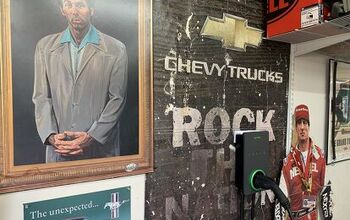

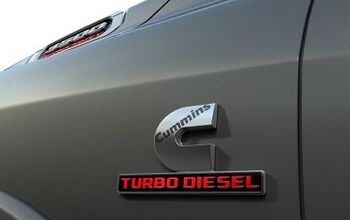
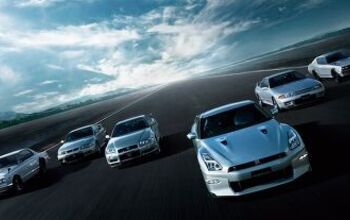
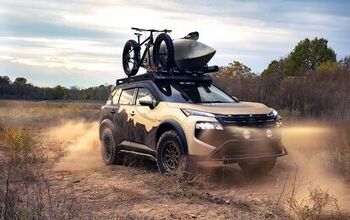



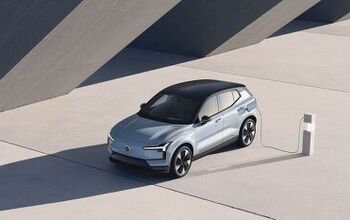
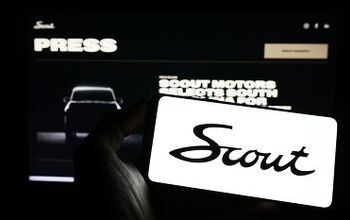
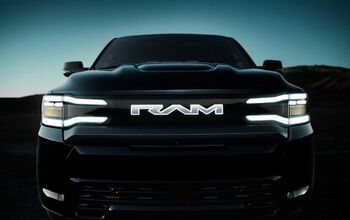
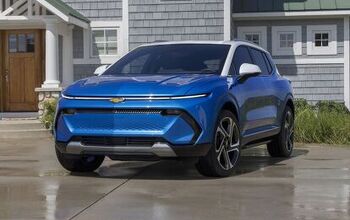

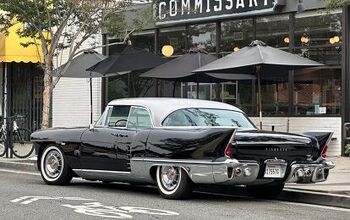
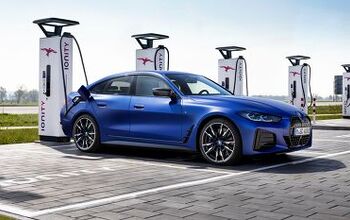
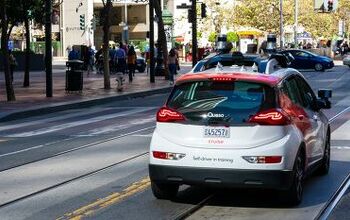
Comments
Join the conversation
Why don't more people comment on the government putting its finger on the scales?
There's a lot of talk about how much batteries have improved. But in reality the last major breakthrough was in 1991 when Sony commercialized the lithium-ion battery. For two decades capacity increased by around 8% per year, but that rate has slowed to 5%. There may be promising new technologies out there, but none is even close to commercialization. But even with all those capacity advances li-ion batteries still have very low energy density. Pound for pound, gasoline stores 80 times more energy than li-ion batteries. That's why a Tesla battery pack weighs over 1,000 pounds, while 15 gallons of gasoline weighs less than 100. And those 15 gallons will take you further in most cars. Gasoline is an incredible fuel, and it won't be replaced as easily as many believe.